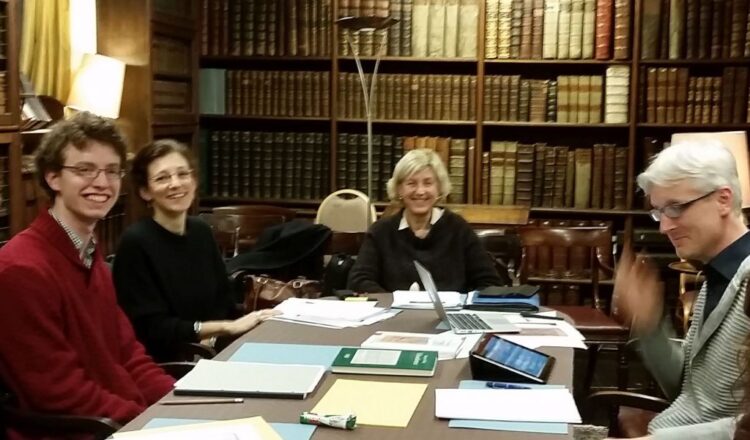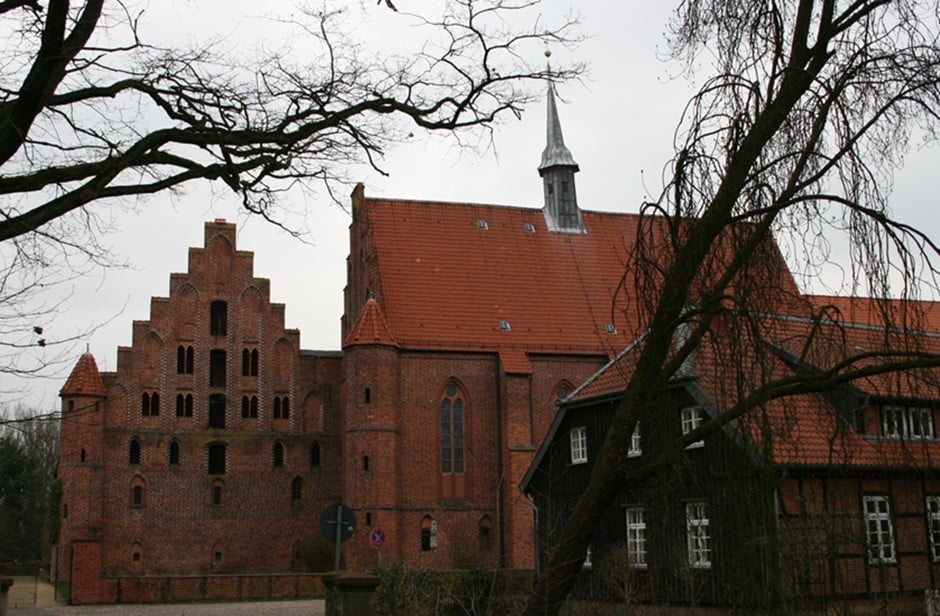Voices from the past: The surprising stories told by medieval German nuns
20 Jun 2024|Henrike Lähnemann
- Research
The newly published book by Hall Fellow Professor Henrike Lähnemann explores the life of medieval German nuns, told through their diaries, letters and artworks. It opens up for the first time the rich surviving heritage of the convents for an English-speaking readership in text and image.
Have you ever visited Godstow Abbey in Oxford? Most people just pass the ruins on their way to the Trout or while looking for a good spot for wild swimming on Port Meadow, but 500 years ago this would have stopped you in your tracks: an imposing church, large economic buildings the size of Christ Church, a constant stream of deliveries – a centre of power and attention.
The dissolution of the monasteries obliterated most of this heritage and, by turning the buildings into ruins, also silenced the voices of the women who lived there. The book I have co-written with historian Eva Schlotheuber – The Life of Nuns: Love, Politics, and Religion in Medieval German Convents – tries to revert this process. For this we were able to draw on the rich sources surviving in the German-speaking lands from female monastic communities, particularly in the now-Protestant convents of Northern Germany. Through translating the nuns’ diaries and letters and interpreting the tapestries, wall paintings, and illuminated manuscripts they produced and commissioned, we have looked to bring this shared European heritage to life again.
Video: Henrike Lähnemann making an impromptu book promotion at Godstow Abbey, 17 April 2024.

The scholarship behind the stories: 1,800 letters, a diary and a research team
Eva and I have been working on an open-access scholarly edition of 1,800 letters from Kloster Lüne for some years now (in fact, the first project meeting for that took place in the Old Library of the Hall in 2016). With The Life of Nuns we wanted to make the vivid accounts of everyday-life in a community of women accessible to those not able to read medieval Latin and Middle Low German, the medieval dialect spoken in the area of the Hanseatic League.
The Life of Nuns tries to capture the richness of the life of these medieval nuns by incorporating as much primary source material as possible. Each of the big topics – such as Education, Music, Love and Friendship – starts with an account taken from the diary of a nun who lived at the end of the 15th century in the Convent of the Holy Cross in Braunschweig. The anonymous author covers the high feasts – celebrating the entry of new nuns, welcoming illustrious visitors – and the everyday mundane events – lice, Lebkuchen (gingerbread), laundry. And we end each of our chapters with the presentation of a significant art work from the convents: the impressive wall paintings done in the 14th century by “three nuns all called Gertrud” in Wienhausen, the largest medieval world map in Ebstorf (30 goatskins sewn together), tapestries, statues, stained glass, the oldest spectacles in the world (fallen through the floorboard cracks in the nuns’ choir) – an embarrassment of riches from a world that few people even know existed.

College and Convent: A tale of two institutions
What has fascinated me from the start when I joined the Hall were the similarities of convent and college life. The visible signs of this are entering an enclosed space via the Lodge, the organisation of the buildings of library, dining hall and chapel, and the annual rhythm of life marked by feasts and saints days (the term names such as Michaelmas, St Edmund Day, etc.). But what is more important is the hidden parallels: the underlying sense of a shared purpose, of a connection to a past that inspires and informs the present – and the future. I think our College Strategy with its commitment to sustainability (and integrating the Medieval Mystery Plays!) would have got the approval of the 15th-century nuns whose life we are trying to tell in this volume.
Video: St Edmund Hall’s Fellowship Lectures, May 2021. Lunchtime talk on the parallels between convent and college life.
The book is available open access online, for free, via Open Book Publishers: Henrike Lähnemann & Eva Schlotheuber, The Life of Nuns: Love, Politics, and Religion in Medieval German Convents (Cambridge: OBP 2024). When ordering a paper copy, use the code LONHL_24 to get a 20% discount.
Category: Research
Author

Henrike
Lähnemann
Henrike Lähnemann is Oxford’s Professor of Medieval German Literature and Linguistics and a Fellow of St Edmund Hall. Her research interests include a wide range of medieval literature and religion, and particularly manuscript studies, the intersection of visual and textual culture, Latin-German bilingual writing, and the digital humanities.